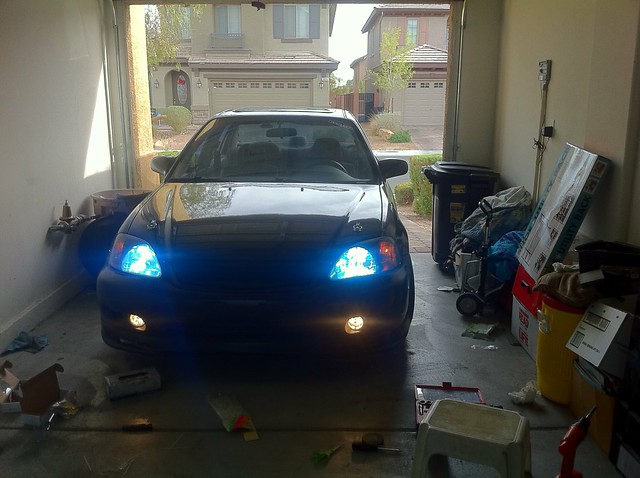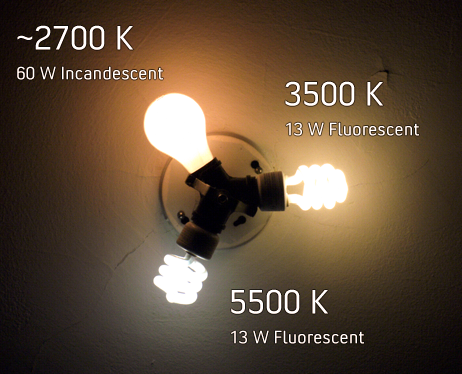lagunak47
New Member
Hello all!
I am currently a film major here at the University of Nevada, Las Vegas. I work and plan on making a living being a cinematographer. Everything I've been seeing on what ratings you should get for your HID's seem misguided.
Kelvin is the measurement of the color of light (basically). I will break down kelvin rating into commonly used lighting scenarios. To start we must pick a temperature as our base or WHITE. We typically see something as white when it is around 5600k. This is because daylight (sunlight) is rated at 5600k, and it is the ONLY natural light source. So then...
7000 and up - Rarely appear in nature, northern lights are 10,000k (Very blue light)
6000k - Sun (on overcast day)
5600k - Sun (at noon on clear day)
4200k - Fluorescent lighting
3200k - Tungsten lighting (typical orange house lights / car head lights)
1600k - Candle light
as you notice the lower the number the warmer the light, the higher the number the cooler the light. So if you want to see what color your HIDs will be go look at the real world examples of the same color light and compare it to 5600k (overhead daylight)
Here is an example with my car

notice the color of the daylight outside (COLOR OF LIGHT, NOT HOUSES) it is WHITE. Then look at the WARM fog lights (3200k) and the COOL headlights (8000k HIDs)
.
Once you start looking at how light changes color you will understand the kelvin ratings. Unfortunatly this is difficult because our brains rapidly adjust to see whatever light is in front of us as white. However once you become aware of this, and really start to notice the changes it becomes easy to evaluate light.
Hope this helps.
I am currently a film major here at the University of Nevada, Las Vegas. I work and plan on making a living being a cinematographer. Everything I've been seeing on what ratings you should get for your HID's seem misguided.
Kelvin is the measurement of the color of light (basically). I will break down kelvin rating into commonly used lighting scenarios. To start we must pick a temperature as our base or WHITE. We typically see something as white when it is around 5600k. This is because daylight (sunlight) is rated at 5600k, and it is the ONLY natural light source. So then...
7000 and up - Rarely appear in nature, northern lights are 10,000k (Very blue light)
6000k - Sun (on overcast day)
5600k - Sun (at noon on clear day)
4200k - Fluorescent lighting
3200k - Tungsten lighting (typical orange house lights / car head lights)
1600k - Candle light
as you notice the lower the number the warmer the light, the higher the number the cooler the light. So if you want to see what color your HIDs will be go look at the real world examples of the same color light and compare it to 5600k (overhead daylight)
Here is an example with my car

notice the color of the daylight outside (COLOR OF LIGHT, NOT HOUSES) it is WHITE. Then look at the WARM fog lights (3200k) and the COOL headlights (8000k HIDs)
.
Once you start looking at how light changes color you will understand the kelvin ratings. Unfortunatly this is difficult because our brains rapidly adjust to see whatever light is in front of us as white. However once you become aware of this, and really start to notice the changes it becomes easy to evaluate light.
Hope this helps.



